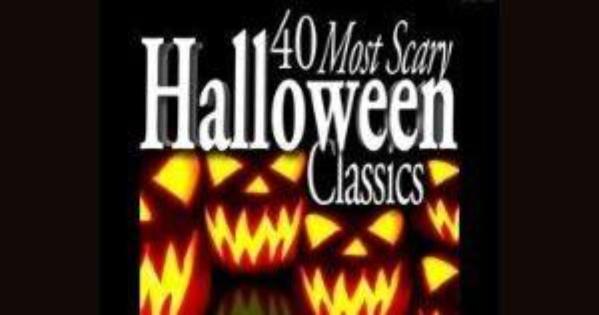Feature Fridays: 40 Most Scary Halloween Classics

Welcome to Feature Fridays! Each week, AU Music Library staff highlight an item from our collection. While the music library is closed, we will feature items that are available for streaming. This week Music Library Coordinator Amanda Steadman reviews 40 Most Scary Halloween Classics, available from Naxos Music Library with your AU credentials.
In this spooky season, I wanted to highlight something Halloween-related. Naxos conveniently suggested this collection of classical pieces. Not all of them sound exactly spooky to me—particularly items like Debussy’s Clair de Lune (“moonlight”) and La cathedral engloutie (“the sunken cathedral”), which are more “spooky in name only” to my ears, although both beautiful pieces. But there’s plenty to explore in this collection, which features performances from various top name orchestras and solo performers.
Haunted highlights you may have heard before include Mussorgsky’s Night on Bald Mountain, which if you’ve ever seen Disney’s Fantasia, is the one with the devil on the mountaintop. Bach’s Toccata and Fugue in D Minor, BWV 565 is also in Fantasia, but has been used for numerous appearances of organ playing vampires. Anyone with an ear for Broadway will recognize the music from Andrew Lloyd Webber’s Phantom of the Opera.
My favorite spooky secret is the Dies Irae, a melody that originates in plainchant of the Requiem mass (mass for the dead); the original setting’s date is unclear, but is generally thought to be sometime in the 13th century. You can hear the plainchant setting in on this track from the album. The beginning eight-note melody has been used as musical shorthand for death and other scary things by composers over the past eight centuries (especially the first four notes.) It appears in other pieces on this album, most notably in Berlioz’s Symphonie Fantastique (which itself has a fascinating story that I don’t have space to cover here!), in the final movement, “Dream of a Witches’ Sabbath.” You can hear it in this version around 3:06 and again at 7:40. Another instance can be found in Franz Liszt’s Totentanz (“death dance”) throughout the piece. For another famous quotation of this melody, I recommend an excellent episode of the podcast Strong Songs on “Making Christmas” from Danny Elfman’s score for The Nightmare Before Christmas. This melody shows up several times in Elfman’s score and hearing the host talk through Elfman’s use of the melody may help you to recognize it in other films. I will note quickly that the Dies Irae text is also used separately from this melody in settings of the Requiem mass. Mozart’s famous setting is also included in this collection.
Overall, this collection features an alarming atmosphere for spooky studying. I recommend it for your Halloween listening pleasure.
40 Most Scary Halloween Classics and many other albums of classical music are available for streaming from Naxos Music Library with your AU credentials.
